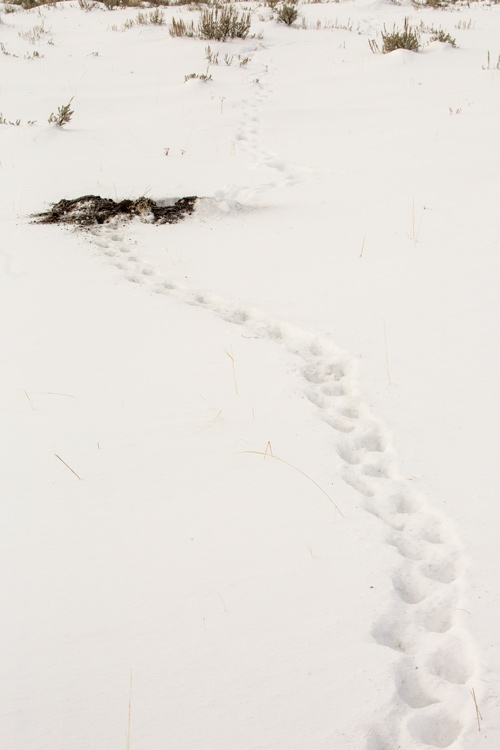At Fort Mandan,François-Antoine Larocque and Charles McKenzie—two traders staying at a nearby Hidatsa village— visit the captains. Hunters bring in four wolf skins and a badger, the latter identified by the visitors as a brarow.
Messrs Larocque and McKenzie
by Yellowstone Public Radio[1]Originally aired weekdays by Yellowstone Public Radio during the Bicentennial observance of 2003-2006. Narrated by Hal Hansen. Scripts by Whit Hansen and Ed Jacobson. Produced by Leni Holliman. © … Continue reading
Hunting Report
in the evening two of the hunters came in brought with them 4 wolf Skins which they had caught in Steel traps they killed a braro also. a large woolf took off one of their traps. they Informed us that Sergt pryors hunting party had killed 3 Elk 4 Deer & 2 porkipines.
—John Ordway
North West Company Visitors
Went down to Fort Mandan, in the morning, to Return a Book I had borrow’d, & to see if there was any particular news.
—François-Antoine Larocque[2]18 January 1805, W. Raymond Wood and Thomas D. Thiessen, Early Fur Trade on the Northern Plains: Canadian Traders among the Mandan and Hidatsa Indians, 1738–1818 (Norman: University of Oklahoma … Continue reading
The Brarow (Badger)
Two men belonging to the N. W. company, who stay at the Grossventers village, came to the fort. They say this animal which the French call a prarow, or brarow, is a species of the badger.
—Patrick Gass
Weather Diary
Ther. at rise
Weather Wind at rise
Thert. at 4 P.M. Weather Wind at 4 P.M. River 1 [below] fair N W 7 [above 0] fair after clouds N W fall 1 in. at Sun rise 12° below 0
—Meriwether Lewis[3]To assist the reader, the editor of this web page has omitted the date column, merged the “River” columns, and spelled out some abbreviations.
Experience the Lewis and Clark Trail
The Lewis and Clark Trail Experience—our sister site at lewisandclark.travel—connects the world to people and places on the Lewis and Clark Trail.
Plan a trip related to January 18, 1805:

Fort Mandan is a High Potential Historic Site along the Lewis and Clark National Historic Trail managed by the U.S. National Park Service. The North Dakota Department of Parks and Recreation manages a modern reconstruction and the Lewis and Clark Interpretive Center located at US Hwy 83 and ND Hwy 200A.
Knife River Indian Villages National Historic Site is a High Potential Historic Site along the Lewis and Clark National Historic Trail managed by the U.S. National Park Service. A unit of the National Park System, the site is located at 564 County Road 37, one-half mile north of Stanton, North Dakota. It has exhibits, trails, and a visitor center.
Notes
| ↑1 | Originally aired weekdays by Yellowstone Public Radio during the Bicentennial observance of 2003-2006. Narrated by Hal Hansen. Scripts by Whit Hansen and Ed Jacobson. Produced by Leni Holliman. © 2003 by Yellowstone Public Radio. |
|---|---|
| ↑2 | 18 January 1805, W. Raymond Wood and Thomas D. Thiessen, Early Fur Trade on the Northern Plains: Canadian Traders among the Mandan and Hidatsa Indians, 1738–1818 (Norman: University of Oklahoma Press, 1985), 149. |
| ↑3 | To assist the reader, the editor of this web page has omitted the date column, merged the “River” columns, and spelled out some abbreviations. |



